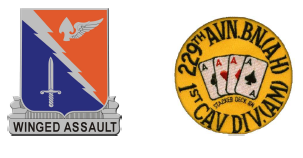BW Perform VMC Approach
Basic Wings requirement: Task_1058 - PERFORM PERFORM VISUAL METEOROLOGICAL CONDITIONS APPROACH
Contents
- 1 7. Basic Wings - Perform VMC approach
- 1.1 7.1. Objective: Perform VMC approach as per task 1058 UH-1h ATM 2007
- 1.2 7.2. Competencies expected: The pilot will demonstrate
- 1.2.1 7.2.1. selection of a suitable landing area (analyse suitability, barriers, wind, approach path, touchdown point, escape routes, and take-off direction).
- 1.2.2 7.2.2. ensuring that sufficient power exists for the type of approach/landing desired.
- 1.2.3 7.2.3. a constant approach angle clear of obstacles to desired point of termination (hover) or touchdown (surface).
- 1.2.4 7.2.4. a rate of closure appropriate for the conditions.
- 1.2.5 7.2.5. maintaining ground track alignment with the landing direction, as appropriate.
- 1.2.6 7.2.6. aligning the aircraft with landing direction below 50 feet or as appropriate for transition from terrain flight.
- 1.2.7 7.2.7. selection of departure path for go-around during approach.
- 1.2.8 7.2.8. selection of a tentative escape route.
- 1.2.9 7.2.9. a safe landing
7. Basic Wings - Perform VMC approach
7.1. Objective: Perform VMC approach as per task 1058 UH-1h ATM 2007
7.2. Competencies expected: The pilot will demonstrate
7.2.1. selection of a suitable landing area (analyse suitability, barriers, wind, approach path, touchdown point, escape routes, and take-off direction).
Winds / Barriers / Size / Long Axis / Tactical considerations
7.2.2. ensuring that sufficient power exists for the type of approach/landing desired.
White or Brown out landings may require hover OGE power.
Wgt and Density Altitude considerations may require running landing.
Pre brief if possible.
7.2.3. a constant approach angle clear of obstacles to desired point of termination (hover) or touchdown (surface).
Hover Landing
Progressively decrease the rate of descent and rate of closure until an appropriate hover is established over the intended termination point.
Landing to the surface.
The decision to terminate to the surface with zero speed or with forward movement will depend on the aircraft's loading or environmental conditions.
Touchdown with minimum lateral movement. After surface contact, ensure that the aircraft remains stable until all movement stops.
Smoothly lower the collective to the full down position and neutralize the pedals and cyclic.
Note: Performing this maneuver in certain conditions may require hover out-of-ground effect (OGE) power. Evaluate each situation for power required versus power available.
Note: A wind evaluation should be performed. Techniques for evaluating wind conditions are found in FM 1-202, Environmental Flight and appendix B of this ATM
7.2.4. a rate of closure appropriate for the conditions.
Once Termination Point is sighted and the approach angle is intercepted, establish and maintain a constant closure angle clear of Obstacles.
Steep approaches can place the aircraft in potential settling with power conditions. VRS
Progressively decrease the descent rate and closure rate to maintain a straight steady Glide Path Dead Man's Curve
Rate of deceleration: For every 50ft of altitude speed should drop 7–10 knots.
Keep in mind however; the rate of deceleration depends on the pitch angle and entry speed.
For example, for the same pitch angle, the rate of deceleration from 80 down to 50 knots is considerably lower (15 seconds)
than the rate of deceleration from 50 knots down to 15 knots (6 seconds)
Decelerations from 80 to 50 knots: helicopter flies down the glideslope toward the touchdown point smoothly and predictably, requiring little to no adjustment in power.
Decelerations under 50 knots: aerodynamics changes require greater engine power in order to maintain the desired rate of descent as airspeed is reduced.
Helicopter will begin to "sink". Danger of VRS
Rapid decelerations achieved by a large pull of the cyclic and drop of the collective should be avoided at airspeeds of 60 – 20 knots.
In response to these inputs Engine Governor restricts engine power to reduce rotor overspeed.
At 25 – 20 knots, the helicopter tends to "sink" requiring a rapid increase in collective to prevent an uncontrolled descent. The now "governed" engine is incapable meeting this abrupt power demand.
This increased collective setting combined with an under powered regime of the engine results in rotor under speed (<314 RPM) potentially causing a spontaneous descent the pilot is unable to stop.
Right yaw tendency may also appear as torque increases and TRE is reduced with lower rotor RPM.
7.2.5. maintaining ground track alignment with the landing direction, as appropriate.
Above 50-feet AGL, maintain ground track alignment and the aircraft in trim.
7.2.6. aligning the aircraft with landing direction below 50 feet or as appropriate for transition from terrain flight.
Below 50-feet AGL, align the aircraft with the landing direction.
7.2.7. selection of departure path for go-around during approach.
Perform if a successful landing is doubtful or if visual reference with the intended termination point is lost (Task 1068).
A Go-around is a planned maneuver with the aircraft under control executed if a successful landing is doubtful or
if visual reference with the intended termination point is lost.
Once climb is established, reassess the situation and develop a new course of action.
7.2.8. selection of a tentative escape route.
An unplanned maneuver where the aircraft may not be under complete control.
Escape routes are preferably to the right-side of the approach path due to loss of tail rotor effectiveness (LTE) considerations.
